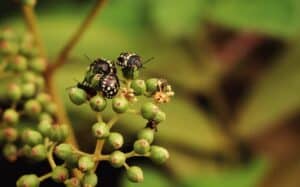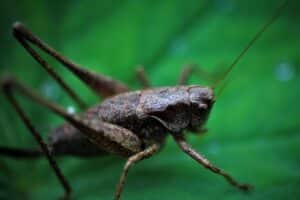The Importance of Training in Effective Pest Control
Training is a crucial component in the realm of pest control, as it equips professionals with the knowledge and skills necessary to handle a variety of pest-related challenges effectively. With the ever-evolving landscape of pest management, including the emergence of new pests and resistance to conventional treatments, ongoing education is essential. Trained pest control specialists are not only able to identify different pest species but also understand their behavior, breeding habits, and the most effective control methods. This expertise ensures that interventions are both efficient and environmentally responsible.
Key Benefits of Training in Pest Control:
- Knowledge of Regulations: Trained professionals are well-versed in local, state, and federal regulations regarding pesticide use, ensuring compliance and minimizing legal risks.
- Safety Protocols: Proper training emphasizes safety measures for both technicians and clients, reducing the likelihood of accidents and exposure to harmful substances.
- Integrated Pest Management (IPM): Training programs often focus on IPM strategies, promoting a holistic approach that combines prevention, monitoring, and control methods tailored to specific situations.
- Customer Education: A knowledgeable pest control technician can educate clients about pest prevention, helping them to maintain a pest-free environment long after treatment.
Moreover, the importance of training extends beyond just technical skills. Effective communication is a vital aspect of pest control that trained professionals excel in. They are equipped to interact with clients, providing clear explanations of pest issues, treatment plans, and preventive measures. This not only builds trust but also enhances customer satisfaction, as clients feel informed and involved in the pest management process.
In an industry where the stakes can be high—ranging from property damage to health risks—proper training ensures that pest control methods are not only effective but also sustainable. By investing in comprehensive training programs, pest control companies can foster a culture of continuous improvement, adapting to new challenges and technologies as they arise. This commitment to education ultimately leads to better service delivery and more effective pest management solutions for clients.
Types of Training Programs for Pest Control Professionals
Pest control professionals require a variety of training programs to equip them with the necessary skills and knowledge to effectively manage pest-related issues. These training programs are essential not only for compliance with regulations but also for ensuring the safety and effectiveness of pest management practices. Here are some of the primary types of training programs available:
1. Initial Certification Training
Initial certification training is often the first step for new pest control professionals. This program typically covers the basics of pest biology, identification, and behavior, as well as the fundamentals of pesticide application. Participants learn about different pest management strategies, safety protocols, and the legal requirements surrounding pest control practices. Most states require passing a certification exam upon completion of this training.
2. Continuing Education Units (CEUs)
Continuing education units (CEUs) are essential for pest control professionals looking to maintain their certifications and stay updated on industry trends and regulations. These programs often include advanced topics such as integrated pest management (IPM), environmental impact of pesticides, and new pest control technologies. CEUs can be obtained through workshops, online courses, and industry conferences, providing professionals with flexible options to enhance their skills.
3. Specialized Training Programs
Specialized training programs focus on specific areas within pest control, such as termite control, bed bug management, or wildlife removal. These programs delve deeper into the unique challenges and techniques associated with each pest category. For example, training for termite control may include hands-on instruction on baiting systems and treatment options, while bed bug management training might cover detection methods and treatment protocols.
4. Safety and Compliance Training
Safety and compliance training is crucial for all pest control professionals to ensure they adhere to local and federal regulations. This training typically includes proper handling and application of pesticides, understanding Material Safety Data Sheets (MSDS), and emergency response procedures. Additionally, safety training emphasizes the importance of personal protective equipment (PPE) and the need for proper disposal of hazardous materials.
In summary, the variety of training programs available to pest control professionals plays a significant role in enhancing their expertise, ensuring compliance, and promoting safe practices in the field. Each program is tailored to address different aspects of pest management, making ongoing education a critical component of a successful career in pest control.
How Training Improves Pest Identification and Management
Effective pest identification and management are crucial components of successful pest control strategies. Proper training equips pest management professionals with the knowledge and skills necessary to accurately identify various pests and understand their behaviors. This expertise not only enhances their ability to respond to infestations but also minimizes the use of harmful chemicals, promoting environmentally friendly practices.
The Importance of Accurate Pest Identification
Accurate pest identification is the first step in developing an effective management plan. Training programs often cover the following key aspects:
- Species Recognition: Understanding the physical characteristics and behaviors of common pests helps in accurate identification.
- Life Cycle Knowledge: Training provides insights into the life cycles of pests, enabling professionals to anticipate and prevent infestations.
- Damage Assessment: Recognizing the signs of pest damage is essential for determining the appropriate management techniques.
Strategies for Effective Pest Management
In addition to improving identification skills, training enhances the ability to implement effective pest management strategies. Trained professionals learn to:
- Develop Integrated Pest Management (IPM) Plans: Training emphasizes the importance of combining multiple strategies for sustainable pest control.
- Utilize Eco-Friendly Solutions: Knowledge of alternative pest control methods reduces reliance on chemical treatments.
- Monitor and Evaluate Results: Ongoing training ensures professionals can assess the effectiveness of their management practices and make necessary adjustments.
Through comprehensive training, pest management professionals not only improve their identification skills but also enhance their overall effectiveness in managing pest populations. This ongoing education is essential for keeping pace with evolving pest challenges and adopting best practices in the industry.
Compliance and Safety: Training’s Role in Pest Control Regulations
In the pest control industry, compliance with regulations is paramount to ensure the safety of both the public and the environment. Training plays a crucial role in helping pest control professionals understand and adhere to these regulations. Through comprehensive training programs, technicians learn about local, state, and federal laws that govern pesticide use, application techniques, and safety protocols. This knowledge is essential for minimizing risks associated with pest control activities and for maintaining a reputable business.
Key Components of Training in Pest Control Regulations:
- Understanding Legislation: Training covers various laws, such as the Federal Insecticide, Fungicide, and Rodenticide Act (FIFRA), which dictates how pesticides should be used and labeled.
- Safety Protocols: Technicians are trained on safety measures to protect themselves, their clients, and the environment from harmful chemicals.
- Proper Application Techniques: Training ensures that pest control professionals know how to apply pesticides correctly and efficiently, reducing the likelihood of misuse.
- Record Keeping: Compliance requires accurate documentation of pesticide applications, which is covered extensively in training programs.
Moreover, training emphasizes the importance of using integrated pest management (IPM) strategies, which promote environmentally responsible practices. By equipping technicians with the skills to implement IPM, training not only enhances compliance with regulations but also fosters a commitment to safety and sustainability. This holistic approach ensures that pest control operations can effectively manage infestations while minimizing their ecological footprint.
In addition to initial training, ongoing education is vital to keep pest control professionals updated on changes in regulations and best practices. Continuous training sessions help technicians stay informed about new products, safety standards, and technological advancements in pest management. By prioritizing compliance and safety through training, pest control companies can build trust with their clients and contribute positively to public health and safety.
Continuous Education: Staying Updated in Pest Control Techniques
In the ever-evolving field of pest control, continuous education is crucial for professionals aiming to stay ahead of the curve. With new pest species emerging, evolving resistance to treatments, and innovative technologies being developed, it is essential for pest control experts to keep their knowledge current. Regular training and education not only enhance the effectiveness of pest management strategies but also ensure compliance with industry regulations and safety standards.
Key Areas for Continuous Education in Pest Control:
- Integrated Pest Management (IPM): Understanding the principles of IPM allows professionals to use a combination of techniques that are environmentally sustainable and effective.
- New Chemical Treatments: Staying informed about the latest chemical solutions and their applications can lead to better pest control outcomes.
- Technology Integration: Learning about advancements in technology, such as drone usage and smart pest monitoring systems, can greatly enhance operational efficiency.
- Regulatory Changes: Keeping abreast of changes in regulations ensures that pest control practices remain compliant and safe for both the environment and public health.
Participating in workshops, webinars, and industry conferences is an excellent way for pest control professionals to expand their knowledge base. Many organizations offer certification programs that not only provide valuable insights but also enhance credibility within the industry. Additionally, networking with peers can facilitate the exchange of innovative ideas and techniques, fostering a culture of continuous improvement.
Online resources and industry publications are also invaluable tools for ongoing education. Subscribing to relevant journals and following reputable pest control blogs can keep professionals informed about the latest research findings and best practices. By prioritizing continuous education, pest control experts can not only improve their service quality but also contribute to a safer and more sustainable environment.











